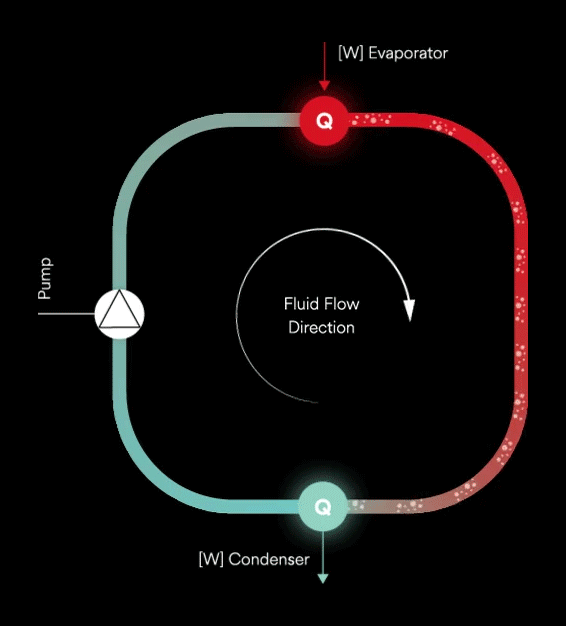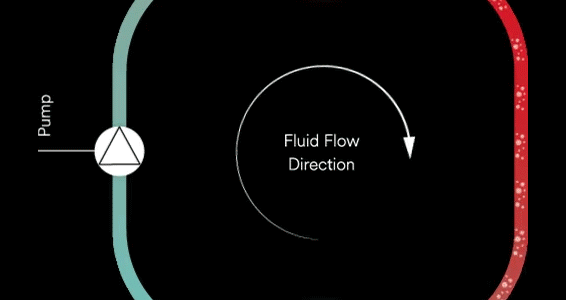What is, two-phase flow cooling, the new cooling technology for high power electronics?
In a two-phase flow cooling system, heat generated in electronic devices (CPU, GPU, FPGA, IGBT, Optical Switch, etc.) is removed by the evaporation (boiling) and condensation of a working fluid. Thanks to these heat transfer mechanisms, this advanced thermal management solution is capable of dissipating larger heat loads compared to the traditional methods available (liquid cooling or heat pipes), in a more efficient way.
The remarkable development of microprocessors in the last decades has created a need for new technologies that can manage heat dissipation in electronic devices with extremely high heat fluxes. This scenario occurs in many industries because of the high density of components in electronic systems installed on devices and machines. Currently, traditional cooling technologies based on air cooling or single-phase forced convection (rather than heat pipe) are reaching their limits of dissipating high-power demands.
The technology developed by In Quattro overcomes the inadequacy of traditional systems and marks a new frontier of advanced thermal control systems.
The innovative solution proposed by In Quattro is a two-phase mechanically pumped loop that works similarly to a liquid cooling system.
The loop, shown in Figure 1, has four main components. A pump circulates the working fluid. Downstream from the pump, fluid flows to an evaporator, the cold plate where liquid evaporates and heat from the electronic device (CPU or GPU) is absorbed. The higher the thermal power of the chip, the higher the quantity of vapor that is formed. Finally the mixture of vapor and remaining liquid flows to a condenser where it is reduced again to liquid, and heat is released from the fluid to ambient or to a heat sink.

Figure 1 – Schematic of a Two-Phase Flow Cooling Loop
This innovative thermal control system will be able to remove very high power densities with low mass flow rate while maintaining the electronic component’s surface isothermal. A two-phase cooling system has the advantage of transferring thermal energy through the latent heat of vaporization, which leads to lower mass flow rates and consequently lower pumping power usage, compared to liquid cooling systems.
In addition to this advantage, the system has lower volume and mass compared to classical cooling methods and requires less energy.
The two-phase cooling system is waterless and uses a dielectric fluid as working fluid. The dielectric fluid has a boiling point in the range of 10°C – 40°C, which provides electrical insulation and serves as a coolant.



